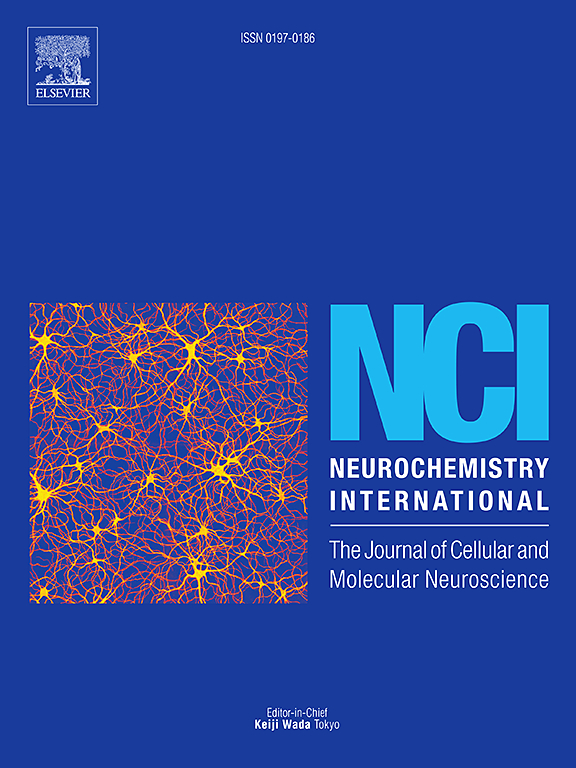室旁核胃泌素释放肽在子痫前期有高血压作用
IF 4
3区 医学
Q2 BIOCHEMISTRY & MOLECULAR BIOLOGY
引用次数: 0
摘要
背景子痫前期(PE)是一种与高血压相关的妊娠并发症,其主要机制尚不清楚。胃泌素释放肽(GRP)参与中枢血压的调节,但下丘脑室旁核GRP及其受体GRPR是否参与PE的血压调节尚不清楚。方法在子宫灌注压降低(RUPP)的PE大鼠模型中,我们初步评估了GRP/GRPR在PVN内的表达水平及其细胞分布。我们研究了ICI-216140 (1 mM/侧/天,PVN显微注射)对GRPR 5天的拮抗作用对PVN活性的影响。在妊娠第19天(GD19)记录平均动脉压(MAP),并采集标本进行分析。我们还研究了氯沙坦对rupp诱导的PVN中MAP和GRP/GRPR表达变化的影响。结果rupp大鼠PVN中MAP、GRP、GRPR表达增加。ICI-216140对GRPR的拮抗作用减弱了RUPP干预,增加了PVN中MAP和氧化应激标志物(包括NOX2、NOX4和活性氧)、NF-κB和酪氨酸羟化酶的表达。虽然ci -216140不影响血管紧张素II受体1型(AT1R)的表达,但氯沙坦阻断AT1R可降低RUPP大鼠MAP 2和GRP的表达。结论PVN中GRP的表达介导了胎盘缺血致高血压,并可能依赖于AT1R活性,为PE动物模型的建立提供了新的药理途径。本文章由计算机程序翻译,如有差异,请以英文原文为准。

Gastrin-releasing peptide in the paraventricular nucleus exerts hypertensive effects in preeclampsia
Background
Preeclampsia (PE) is a pregnancy complication associated with hypertension, whose central mechanism remains unclear. Gastrin-releasing peptide (GRP) is involved in the regulation of central blood pressure, however, whether GRP and its receptor, GRPR, in the paraventricular nucleus of the hypothalamus (PVN) are involved in blood pressure regulation in PE is unknown.
Methods
In this study, we initially assessed GRP/GRPR expression levels and their cellular distribution within the PVN of a PE rat model with reduced uterine perfusion pressure (RUPP). We investigated the effect of five-day antagonism of GRPR with ICI-216140 (1 mM/side/day, PVN microinjection) on PVN activity in this model. On gestational day 19 (GD19), the mean arterial pressure (MAP) was recorded, and samples were collected for analysis. We also investigated the effect of losartan on RUPP-induced changes in MAP and GRP/GRPR expression in the PVN.
Results
RUPP rats exhibited increased MAP, and GRP and GRPR expression in the PVN. GRPR antagonism with ICI-216140 attenuated RUPP intervention-increased MAP and expression of oxidative stress markers including NOX2, NOX4, and reactive oxygen species, NF-κB, and tyrosine hydroxylase in the PVN. While ICI-216140 did not affect the expression of angiotensin II receptor type 1 (AT1R), the blockade of AT1R with losartan decreased MAP 2and GRP expression in RUPP rats.
Conclusions
Our findings suggest that GRP expression in the PVN mediates placental ischemia-induced hypertension and may depend on AT1R activity, which provides new pharmacological avenues for animal models of PE.
求助全文
通过发布文献求助,成功后即可免费获取论文全文。
去求助
来源期刊

Neurochemistry international
医学-神经科学
CiteScore
8.40
自引率
2.40%
发文量
128
审稿时长
37 days
期刊介绍:
Neurochemistry International is devoted to the rapid publication of outstanding original articles and timely reviews in neurochemistry. Manuscripts on a broad range of topics will be considered, including molecular and cellular neurochemistry, neuropharmacology and genetic aspects of CNS function, neuroimmunology, metabolism as well as the neurochemistry of neurological and psychiatric disorders of the CNS.
 求助内容:
求助内容: 应助结果提醒方式:
应助结果提醒方式:


